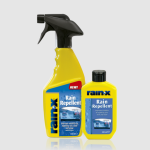Indoor LED screens have revolutionized content presentation for businesses operating, from retail spaces and corporate events to entertainment venues and command centers. Their versatility in delivering vivid visuals makes them perfect for advertising, presentations, and immersive experiences.
- Mistake#1: Choosing the Wrong Pixel Pitch
- Mistake#2: Ignoring Brightness and Ambient Light Conditions
- Mistake#3: Overlooking Installation and Maintenance Needs
- Mistake#4: Neglecting Display Control Systems and Energy Efficiency
- Mistake#5: Forgetting to Evaluate Build Quality and Durability
- LEDMAN’s X Series
- Conclusion
However, choosing the wrong indoor LED screen will create expensive issues that reduce both system functionality and user enjoyment. Below are five critical mistakes to avoid when choosing an indoor LED screen; keep reading!
Mistake#1: Choosing the Wrong Pixel Pitch
Pixel pitch—the distance between individual LEDs—directly impacts display clarity. A smaller pixel pitch means higher resolution, ideal for close viewing (e.g., retail kiosks). On the other hand, a larger pitch suits screens viewed from afar (e.g., conference halls).
A wrong pitch results in blurry images or unnecessary costs. For example, a 1.5mm pitch is optimal for 6–10 feet viewing, while a 3mm pitch works for 15–20 feet. Always match the pixel pitch to your audience’s average viewing distance.
Mistake#2: Ignoring Brightness and Ambient Light Conditions
Brightness helps an LED display stand out at any installation location. Poor brightness levels can lead to washed-out images, especially in well-lit indoor environments.
Avoiding Visibility Issues
Placing an LED screen in well-lit indoor spaces may ruin its output because low brightness will not shine through; while bright screens that display images in dark areas cause eye strain for viewers.
Recommended Brightness Levels
General indoor environments (conference rooms or offices): 800-1200 nits.
Indoor displays in well-lit areas (exhibitions, shopping malls): 1000-2000 nits.
Mistake#3: Overlooking Installation and Maintenance Needs
Your LED wall system needs proper installation to work correctly and look beautiful. Common installation options include:
- Wall-mounted: Sleek and space-saving, but requires sturdy walls to support the weight.
- Hanging installations: Ideal for spaces with high ceilings but may require additional structural support.
- Freestanding units: Perfect for temporary setups like trade shows but require ample floor space.
Maintenance Considerations
Indoor LED displays often require regular upkeep. Easy access for maintenance, such as front-serviceable designs, can save time, effort, and costs in the long run.
Always check the screen’s dimensions and weight to ensure it’s compatible with your installation environment. Look for screens that support flexible configurations to meet unique installation challenges.
Mistake#4: Neglecting Display Control Systems and Energy Efficiency
An LED screen is only as good as the technology managing it. Advanced display controllers, video processors, and seamless signal transmission are essential for delivering high-quality visuals. Common issues with poorly optimized systems include:
- Low refresh rate leads to flickering.
- Poor color accuracy disrupts content quality.
- Slow signal response affects live event displays.
Energy Efficiency Matters Too
Traditional LED screens can consume a significant amount of power, impacting your operational costs. Selecting energy-efficient indoor LED displays ensures you get premium performance without breaking the bank.
Pro Tip
Invest in advanced control systems and eco-friendly LED panels to minimize maintenance costs and improve long-term reliability.
Mistake#5: Forgetting to Evaluate Build Quality and Durability
Indoor LED screens often endure continuous use in demanding environments. Poor build quality can result in frequent failures, higher maintenance costs, and a shorter lifespan.
LEDMAN’s X Series
Looking for an indoor LED screen that checks all the boxes? The LEDMAN X Series is your answer.
With features like versatile pixel pitches (1.95mm to 5.95mm), high brightness levels (indoor up to 1200 nits), and advanced energy efficiency, the X series delivers top-tier performance for any indoor setting.
The unique 6-axis alignment function and multiple installation options make it a flexible choice, supporting wall-mounted/hanging and stacking installation.
Whether you’re setting up in a conference room or a lobby, LEDMAN ensures stunning visuals with minimal hassle.
Conclusion
Avoiding these common mistakes will help you choose an indoor LED screen that delivers the best performance and meets your unique business needs. Pay close attention to elements like pixel pitch, brightness, installation requirements, and control systems to ensure your investment pays off in the long run.
Need help selecting the right LED display for your environment? Reach out to a trusted provider like LEDMAN or browse their indoor LED screens to find the perfect match for your space!












